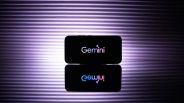In a groundbreaking new study, researchers used trained pigeons to detect mammogram scan images and microscopic slides with biopsy samples with malignant and benign tissues. The trained pigeons, that can distinguish human faces, paintings by various artists, alphabet letters, were as good as human doctors in detecting samples with cancer.
Eight pigeons were involved in the experiment. They were taught to peck a specific button for samples showing either a benign or malignant tissue. The pigeons were given food as a reward.
"Pigeons' accuracy from day one of training at low magnification increased from 50 percent correct to nearly 85 percent correct at days 13 to 15," said University of California's Professor Richard Levenson, the study's lead researcher.
Researchers found that the pigeons were at par with human radiologists when it comes to the detection of microscopic calcification spots on scanned images which could be a primary indication of cancer. At the end of the training, the pigeons' accuracy ranged between 72 to 84 percent. When the birds' performance is taken as a whole, wherein choices of the majority in each test matched, the birds' overall accuracy is 99 percent in identifying cancer in the images used.
For human radiologists, the laborious task is quite tough. Some doctors with a vast amount of training and years of education can misinterpret mammogram scans and have a hard time interpreting microscopic slides.
"Pigeons' sensitivity to diagnostically salient features in medical images suggest that they can provide reliable feedback on many variables at play in the production, manipulation, and viewing of these diagnostically crucial tools," added Levenson. The findings were published in the journal Public Library of Science ONE on Nov. 18.
Birds do not have the extravagance of being irritated when interpreting 10,000 images, Levenson added who stressed this clear advantage in the potential role of pigeons in breast cancer detection. The researchers suggested that instead of hiring human radiologists and pathologists to interpret thousands of images, trained pigeons could do that job. A double win in terms of accuracy and cost-efficiency.
ⓒ 2025 TECHTIMES.com All rights reserved. Do not reproduce without permission.




